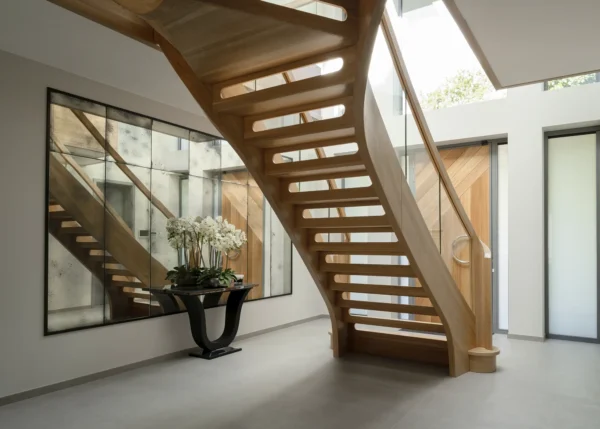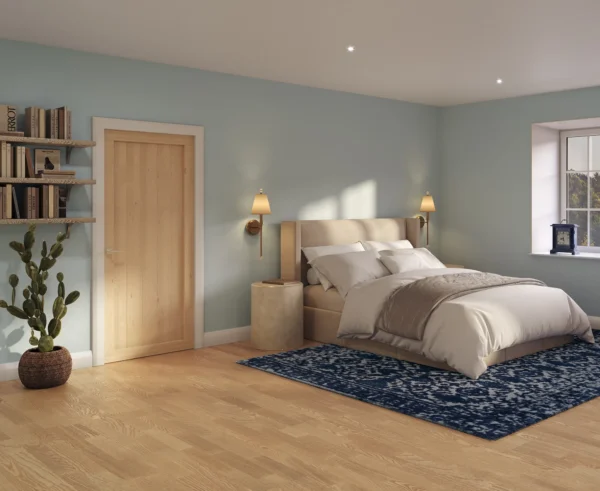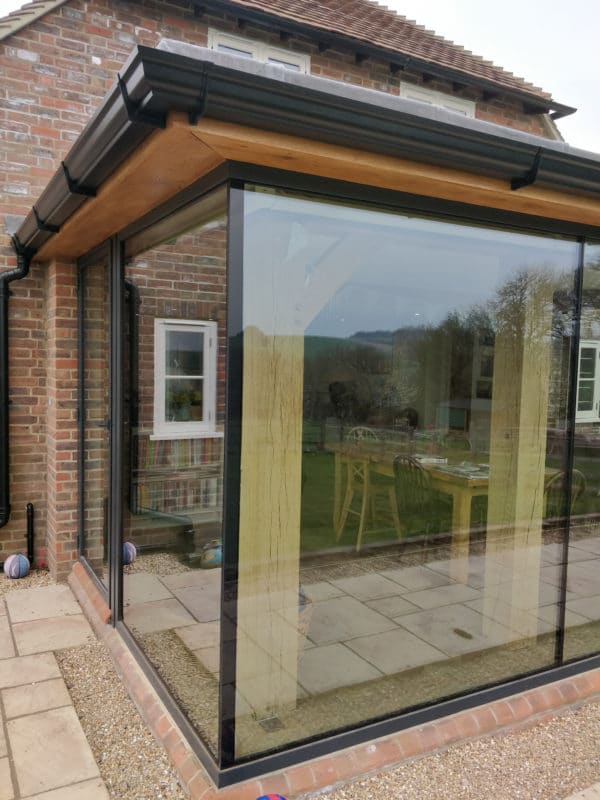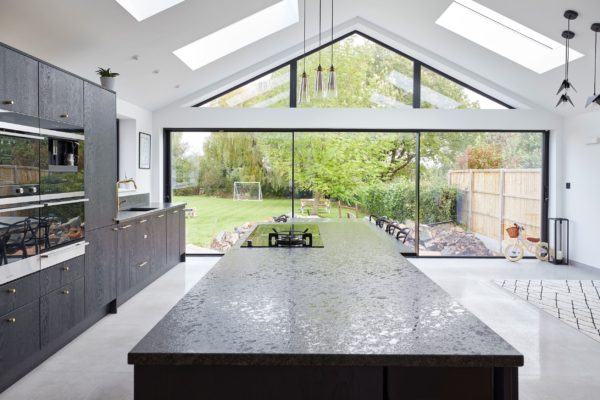Home Extension Fit-Out Costs: Prices for Glazing, Kitchens, Doors, Flooring & More
The question “how much will my extension cost?” depends on many variables, from materials and size to the quality of finish and what you plan to use the space for. In this article, we’re focussing on the internal fit-out, which can have a surprising impact on the finished cost of your extension project.
Budgeting for a Home Extension
If you’re thinking about what’s possible with your budget, Build It’s Estimating Service is a good place to start. This enables you to submit your home extension plans and access a detailed cost breakdown for your project. Recent example costings include a 40m2 extension with flat roof (£67,752) and a 20m2 loft conversion with dormer window (£48,000).
These estimates factor in a basic level of fit-out, but deliberately don’t include fit-out features that can hugely impact the overall build cost according to their specification, such as flooring and kitchens. It’s important to get a handle on these at the start of the project, as there may be hidden extras.
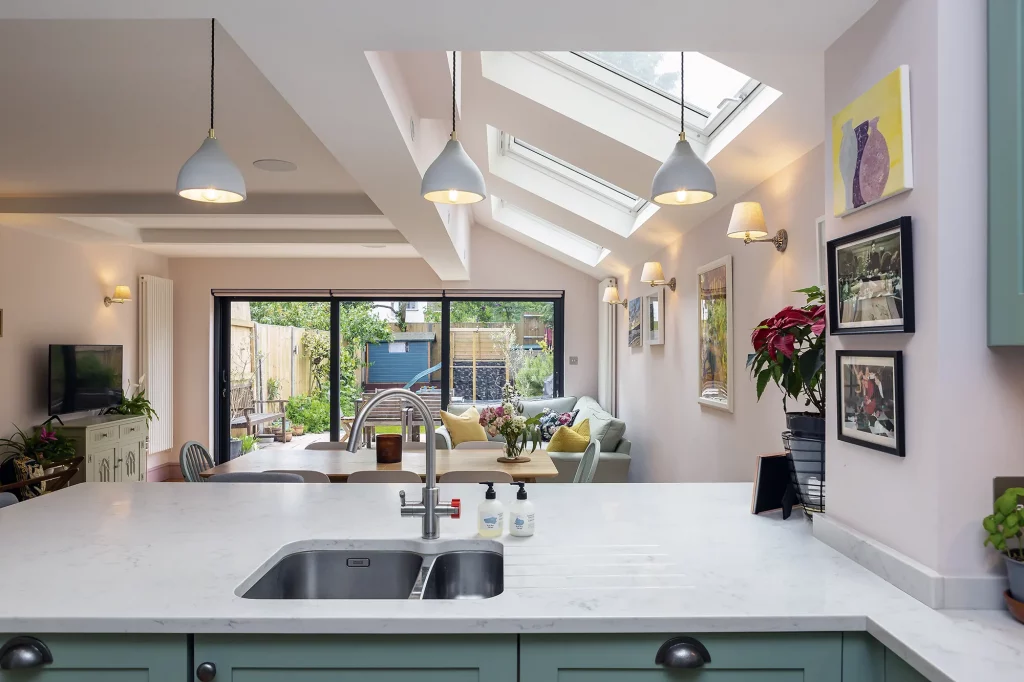
This side return extension in London is by PlusRooms. The project cost £96,500, including pre-project plans and calculations, and the building work itself – with the fit-out an additional cost on top
“When it comes to costs, it’s not just what’s on the surface,” says Kate Clare of architecture and interior design firm Loud Architects.
“We recently worked on a scheme where the client wanted a big chandelier over the table,” she continues. “That meant reinforcing the joists with extra wood and involving the structural engineer to make sure the calculations were correct. So you’ve already started off with a £500 fixture versus an inexpensive spotlight, and then it can work out double that [including installation].”
High-spec fittings, in general, can be pricier to install. “If your main contractor damages something, they’ll have to pay to replace it,” she says. “So, if you opt for a gold cast-iron radiator over a standard trade white one, they’ll build in a fee to cover the potential of that happening.”
Glazing Costs for Home Extensions
Any opening door or window is more expensive than fixed panes. And if you want big glazed doors leading out to the garden, this will require an RSJ (reinforced steel joist) to hold up the roof or upper storey. “I saved £5,000 on my own extension by having a single door plus a pivot door at the rear elevation; having a brick pier in-between meant I didn’t need steel across the back,” says Kate.
If you’re choosing between bifolds and sliding doors, expect to pay more for the latter. Arron Shaw, sales manager at St Albans-based HBD Systems, which supplies and installs glazing, says that a three-door aluminium bifold from Origin for a 3,000mm x 2,100mm aperture costs £4,921 including VAT. Meanwhile, a Sunflex slider in the same material would be £6,428. Installation costs for both would be £780 including VAT.
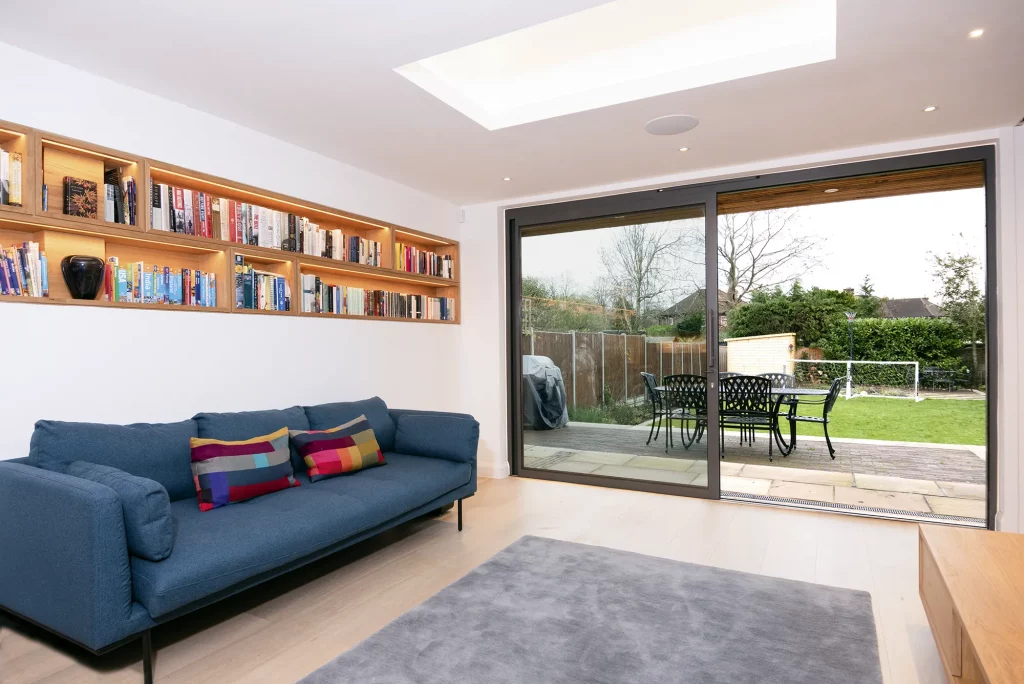
Your choice of glazing can have big budget implications; expect to pay slightly more for sliding doors as opposed to bifolds. This project is by HBD Systems
“Elements that add to the cost are dual-colour frames, and upgrading the glass – for example, laminated glass to maximise security, or a solar control coating,” says Arron. Having several smaller units can reduce installation costs as glass-lifting equipment such as a crane is required for panes weighing over 200kg.
James Bernard, director of extension design and build specialists PlusRooms adds: “Bespoke glazing such as ultra slim doors or larger skylights requiring additional structural consideration can have a huge impact on the cost.” If this blows your extension budget, James suggests that “it may be worthwhile considering more standard options, such as Velux windows rather than skylights.”
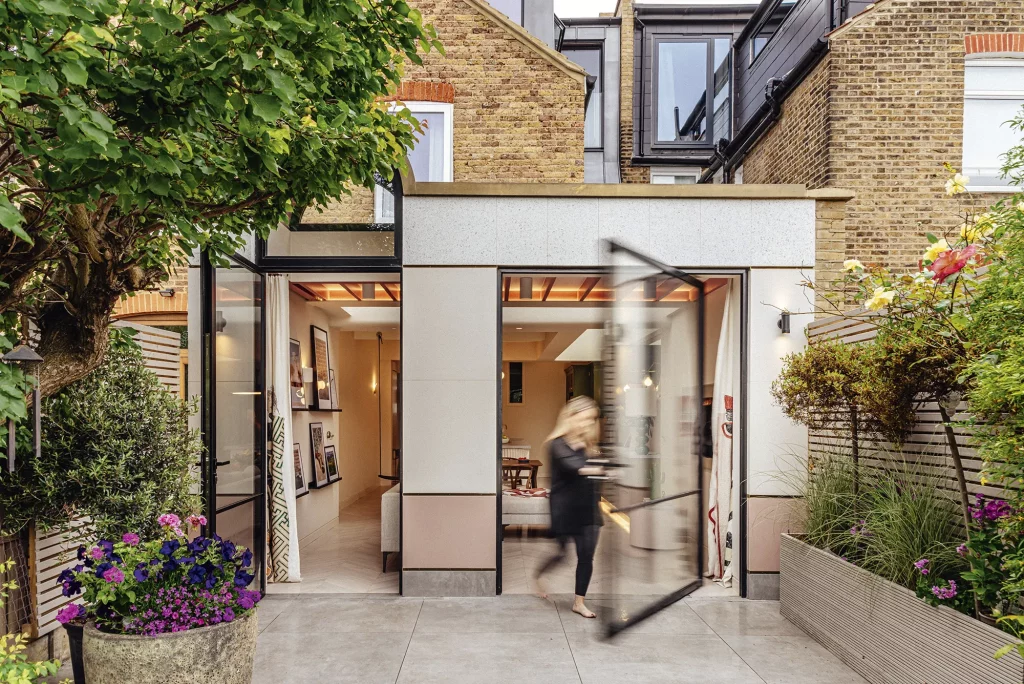
Architect Kate Clare of Loud Architects saved £5,000 on the structure of her extension by opting for two separate doors, including a dramatic pivoting design – having a brick pier in between the two meant that no steel was required to bridge the whole rear of the house
New Kitchen Costs for Extensions
Kitchens can have sky-high price tags due to the spec and number of appliances, luxury materials such as marble, and whether you’ve opted for a bespoke or off-the-shelf design.
“We’re finding mid-range, made-to-order kitchens are priced between £10,000 and £20,000 depending on size and choice of worktops and appliances,” says Edward Medd, co-founder of Vita Modular, which makes modular extensions and garden rooms.
“Our average installation cost is around £5,000, which includes removing old units and appliances, and fitting new cabinets, worktops, sinks, taps and gadgets – but not plumbing in, electrical work or structural work such as adding or removing doors and windows,” continues Edward.
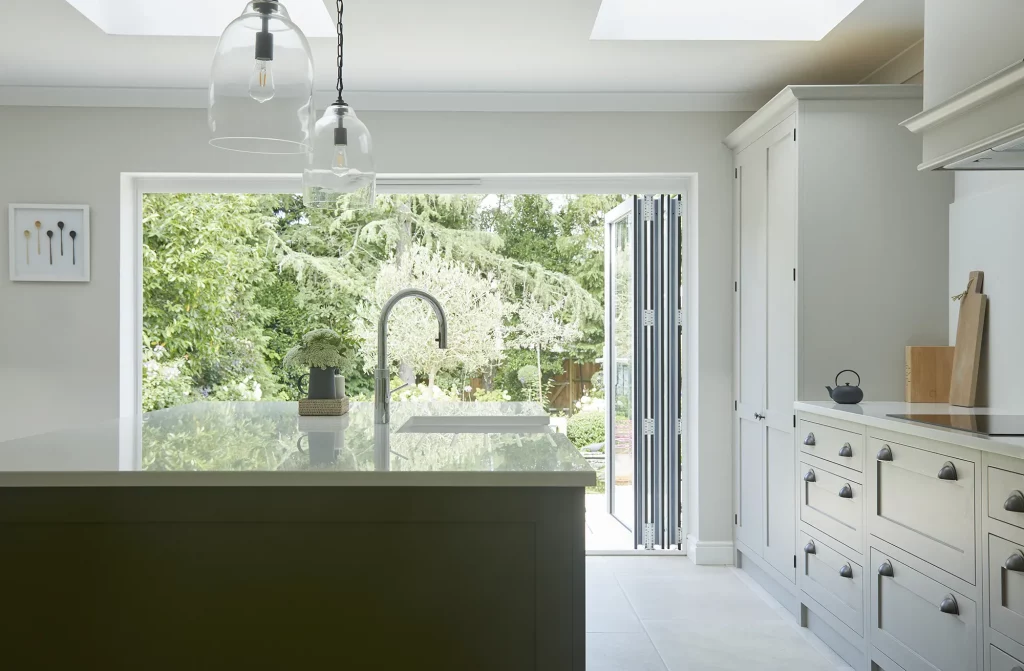
This hand-made Shaker-style kitchen by Oliver & Barr features state-of-the-art appliances and quartz workshops. The price (excluding VAT) breaks down as follows: units, £14,600; appliances, £3,800; worktops, £3,700; and the installation, £2,500
“About 75% of our customers are working on an extension,” says Al Bruce, founder of Shaker-style kitchen company Olive & Barr. He says that the typical kitchen spend on a London side-return extension is £28,000 – including appliances and installation on a dry fit basis, ie after first-fix plumbing and electrics.
If you are looking to cut costs, he suggests considering cheaper appliances first, as well as the make-up of the cabinetry. “Drawers are three times the price of doors, because so much more goes into making them,” Al says.
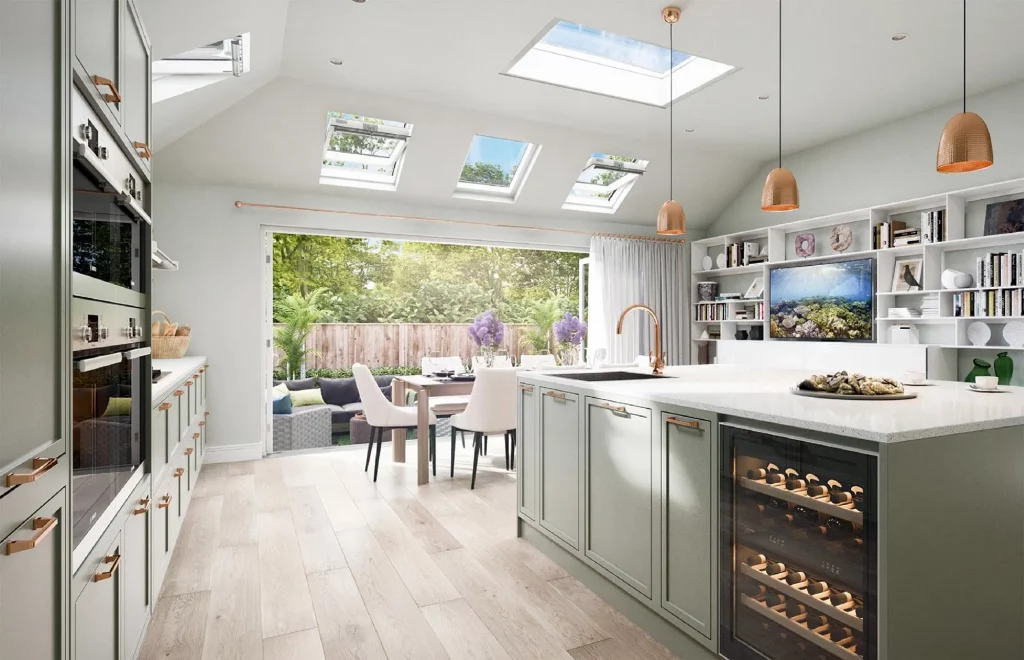
Featuring plenty of overhead glazing, this sun-soaked kitchen was delivered by Vita Modular
An island adds to the budget in terms of extra cabinetry and installation, but it’s proportionate to the cost of a wall cabinet. For worktops, Al suggests that timber examples usually come in around £2,000 on a typical kitchen. The lowest-price quartz worktops start at £3,000, but can rise to £8,500.
Top Tips: Installing a Stylish Kitchen on a Tight Budget >
Internal Door Costs & Joinery Prices
“A few key components that should be considered are internal doors, skirting, architraves, door linings and ironmongery,” says Phillip Lidgerton, managing director of online builders’ merchant Building Materials.
“The cost of internal doors can vary depending on several factors, such as their thickness, fire rating, veneer, glazing or simply the aesthetics of the product. Pre-hung designs can make the process easier when extending a property as they are supplied and fitted in the frame.”
As a rough guide, complete doorsets can range from around £100 per unit through to £1,200 or more, depending on specification.
When it comes to the installation costs, Rob Hands, project manager at Yorkshire-based home improvement company Passmore Group, says that “the average price for an internal door fit is £80-£100, depending on the framework requirements.”
Expect to pay £200-£300 per day in labour for general carpentry work, such as fitting skirting boards.
What does Underfloor Heating Cost for an Extension Project?
“The average cost for 40m2 of underfloor heating is around the £4,000 mark,” says James at PlusRooms – that figure includes installation. He says that the firm usually works with low profile systems that can be laid over both the existing floor and the area of the new extension.
“When clients are looking at low profile underfloor heating, it is important to consider the impact on the skirting, architrave and floor levels,” adds James. In other words, you’ll need to budget for removing and replacing joinery where the UFH extends into the original house, because the floor level won’t be the same.
Read more: Best Ways to Heat a Home Extension
Extension Flooring Costs
Flooring is another area where installation costs can quickly start to add up.
“For a ground-floor kitchen extension, a stylish timber chevron or herringbone floor could set you back by as much as £20,000,” explains Kate from Loud Architects. “You’d pay about £5,000 for the flooring, then the main contractor will charge £5,000 to lay it; plus there’s laying the sub-floor, with the screed and the levelling. Then, you’ll need to add VAT on top.”
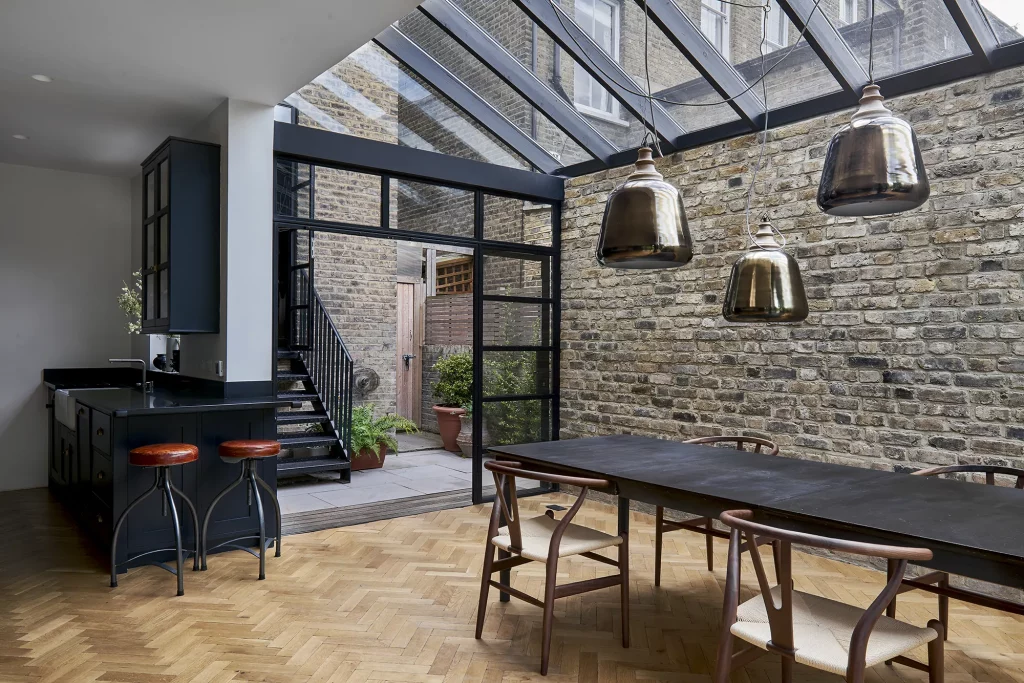
Installation costs for timber floors can add up, so make you get a quote before you buy. This extension by Blee Halligan Architects features Havwoods’ V Collection herringbone floor in European oak, priced at £44.95 per m2 (supply only)
Aim to work with suppliers that will give you access to their list of recommended fitters, so you can get an installation quote before you buy. Porcelain specialist Stone & Ceramic Warehouse does this, for example.
While a beautiful timber chevron floor is at the top end of the market, simple-to-lay and easy-to-maintain vinyl will cost around £300 to install in an average-sized room or extension.
Standard floor tiles might come in at about twice that price for your home extension, depending on the size of units and the complexity of the laying pattern you choose.































































































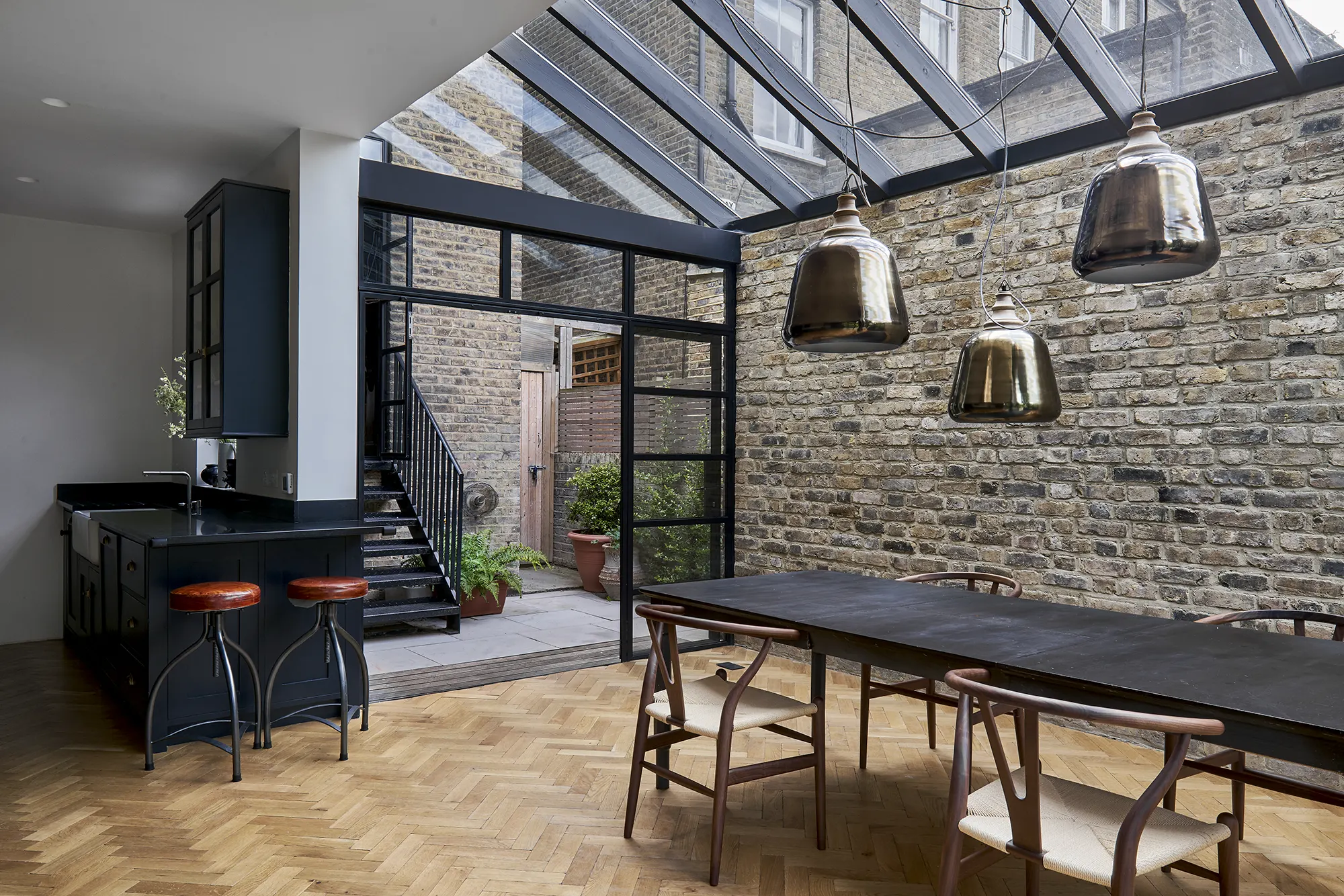
 Login/register to save Article for later
Login/register to save Article for later




